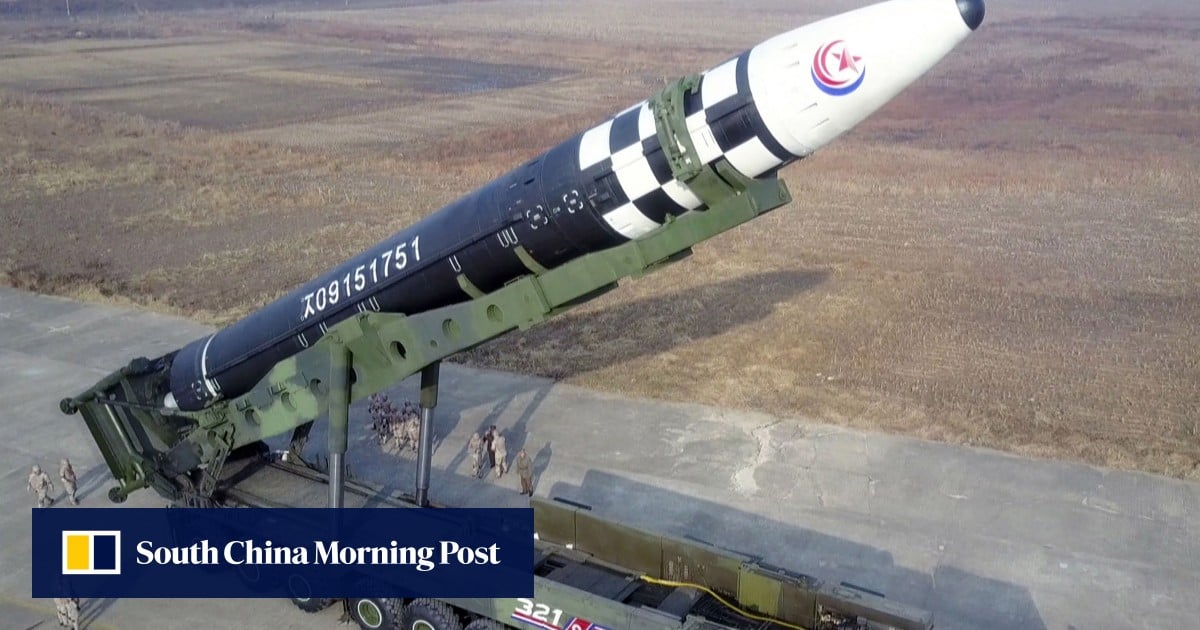The United States has upgraded its naval power to keep China at bay by deploying an advanced nuclear-powered submarine to a key Pacific Ocean strategic outpost.
The USS Minnesota, a Virginia-class fast-attack submarine, and about 140 sailors arrived at their new home at Naval Base Guam on Tuesday. The U.S. Navy said it stationed the most capable units forward to rapidly respond and deter aggression in the Indo-Pacific region.
The 7,800-ton, 377-foot-long Minnesota, which is conventionally armed with 25 torpedoes and 12 land-attack cruise missiles, will be the first Virginia-class submarine to station in Guam.
In a statement on Tuesday, the U.S. Navy revealed that the number of Guam-based fast-attack submarines has increased by one to five, and that the fleet is composed of four older generation Los Angeles-class submarines, in addition to the new arrival.
Mass Communication Specialist 1st Class Justin Wolpert/U.S. Navy
This came amid China’s rapid naval buildup and expansion of operations at sea further from its shores. The Chinese military has the world’s largest navy with more than 370 ships and submarines, including six nuclear-powered submarines like the Virginia-class.
The U.S. military continues to upgrade its naval forces to maintain its dominance at sea in the western Pacific Ocean, including stationing a destroyer armed with a laser weapon as well as an aircraft carrier equipped with stealth fighter jets in Japan, America’s treaty ally.
“China is gravely concerned about the U.S. strengthening forward military deployment in the Asia-Pacific to seek unilateral military advantage,” Liu Pengyu, a spokesperson for the Chinese Embassy in Washington, D.C., said previously to Newsweek.
Guam, the westernmost territory of the U.S., is 1,500-1,700 miles from the Taiwan Strait and the contested waters of the East and South China Seas, making it an ideal staging area to project U.S. naval power, albeit within range of Chinese long-range ballistic missiles.
The territory forms the second island chain, one of the layers of a U.S. defense concept that uses allied or friendly territories to constrain China’s naval and air activity in wartime. The first island chain, which is located to the west, links Japan, Taiwan and the Philippines.
The Virginia-class, which was put into service since the early 2000s, is the replacement of the Los Angeles-class. It has enhanced fighting capabilities to support anti-submarine, anti-surface ship, strike, as well as intelligence, surveillance and reconnaissance missions.
“Its presence will enhance our operational capabilities and further strengthen deterrence efforts throughout the Indo-Pacific,” said Captain Neil Steinhagen, commander of the Submarine Squadron 15, the Minnesota‘s assigned unit while forward-deployed to Guam.
“Chinese military planners know that the U.S. fleet of nuclear-powered attack submarines could be a major threat to China’s fleet,” Brian Hart, a fellow with the China Power Project at the Center for Strategic and International Studies, told Newsweek previously.
While China is investing in its submarine fleet and in anti-submarine warfare capabilities, there is still a “considerable capability gap” in this area that favors the U.S., he noted.
Meanwhile, American fast-attack submarines have visited allied nations in the western Pacific Ocean, including Japan and South Korea, demonstrating the U.S. commitments to the defense of them in the face of threats posed by the nuclear-armed North Korea.
In September 2013, the Minnesota was commissioned and based in Groton, Connecticut. It had its first change of home port in March 2022 after a transfer to Pearl Harbor in Hawaii. The submarine completed its maintenance and returned to service in July this year.


